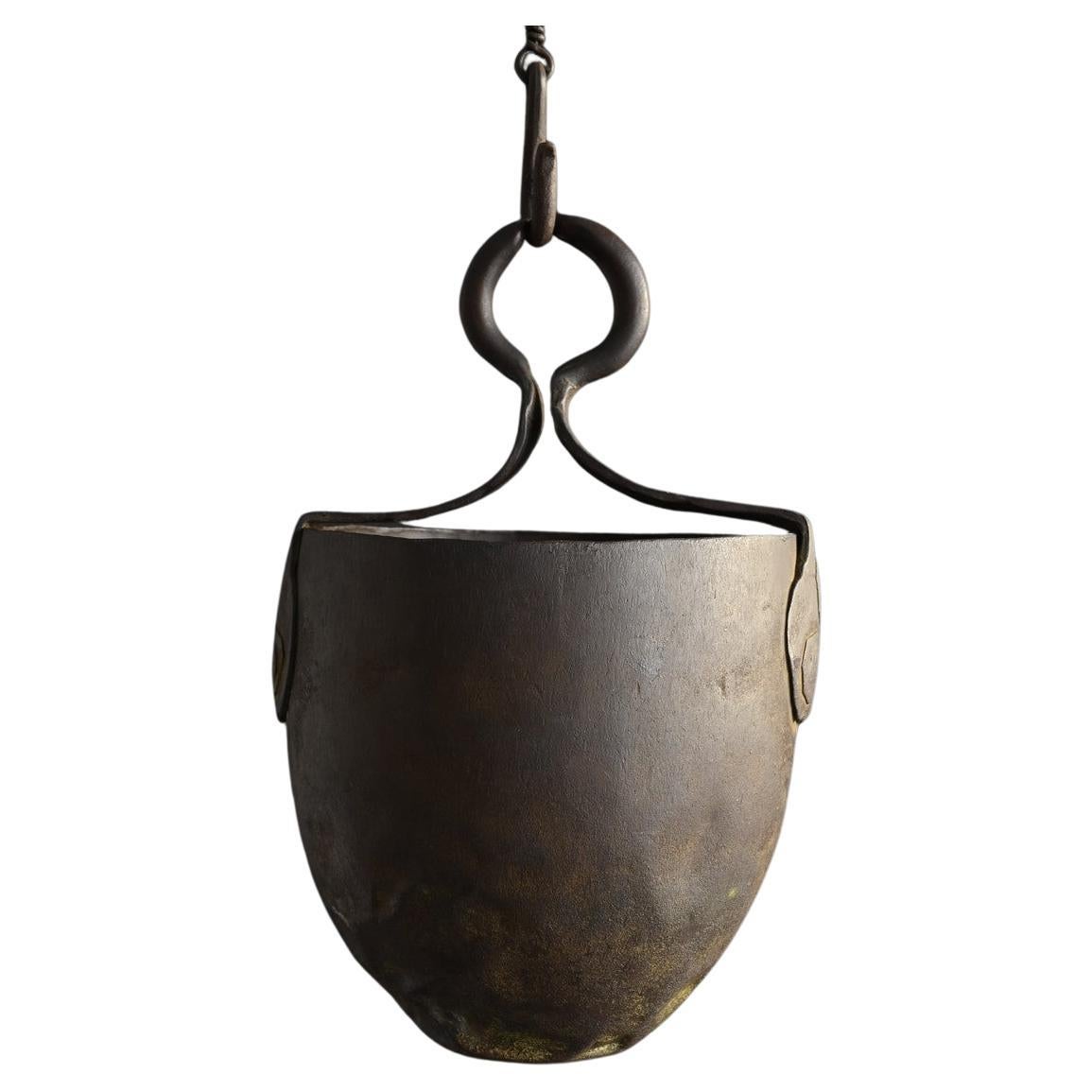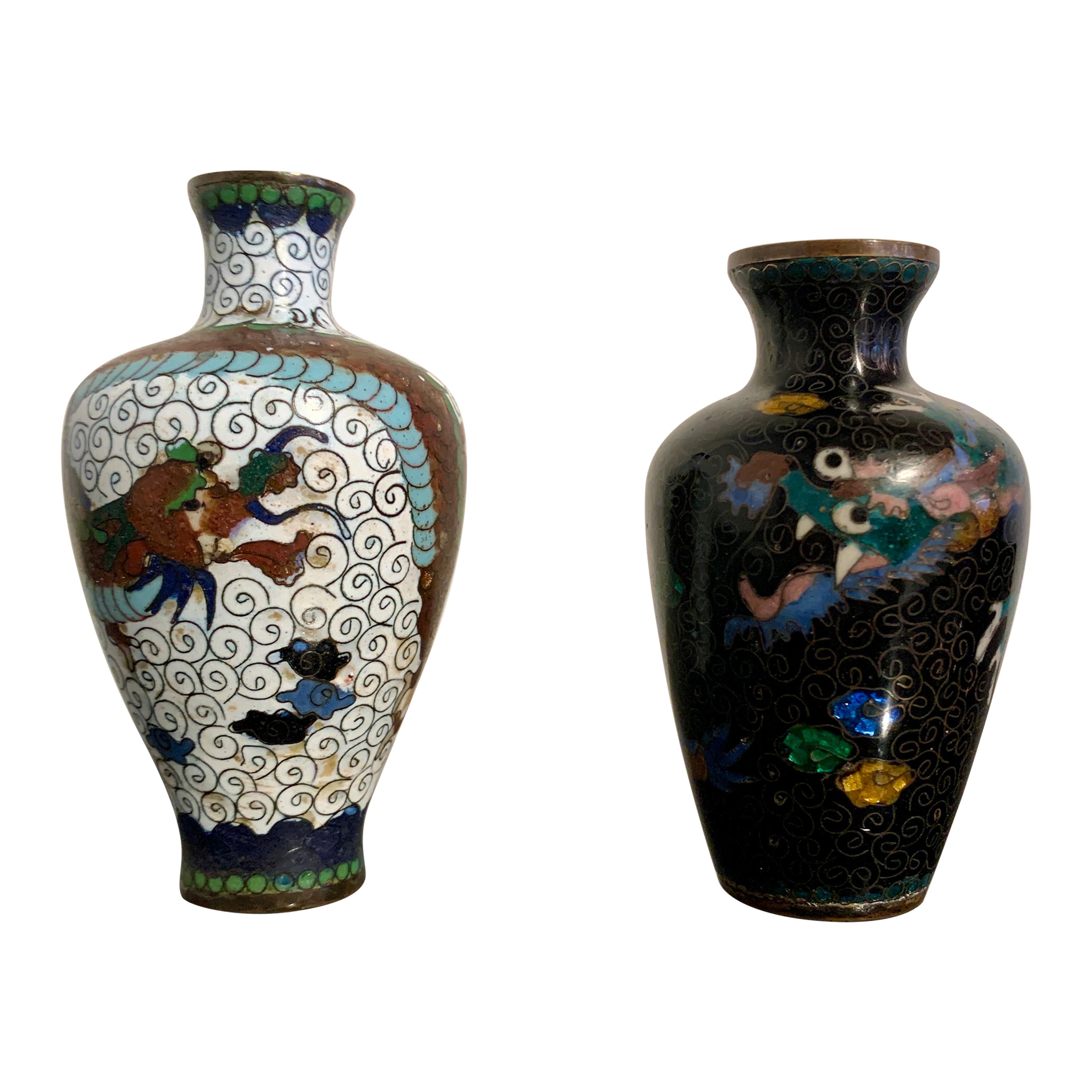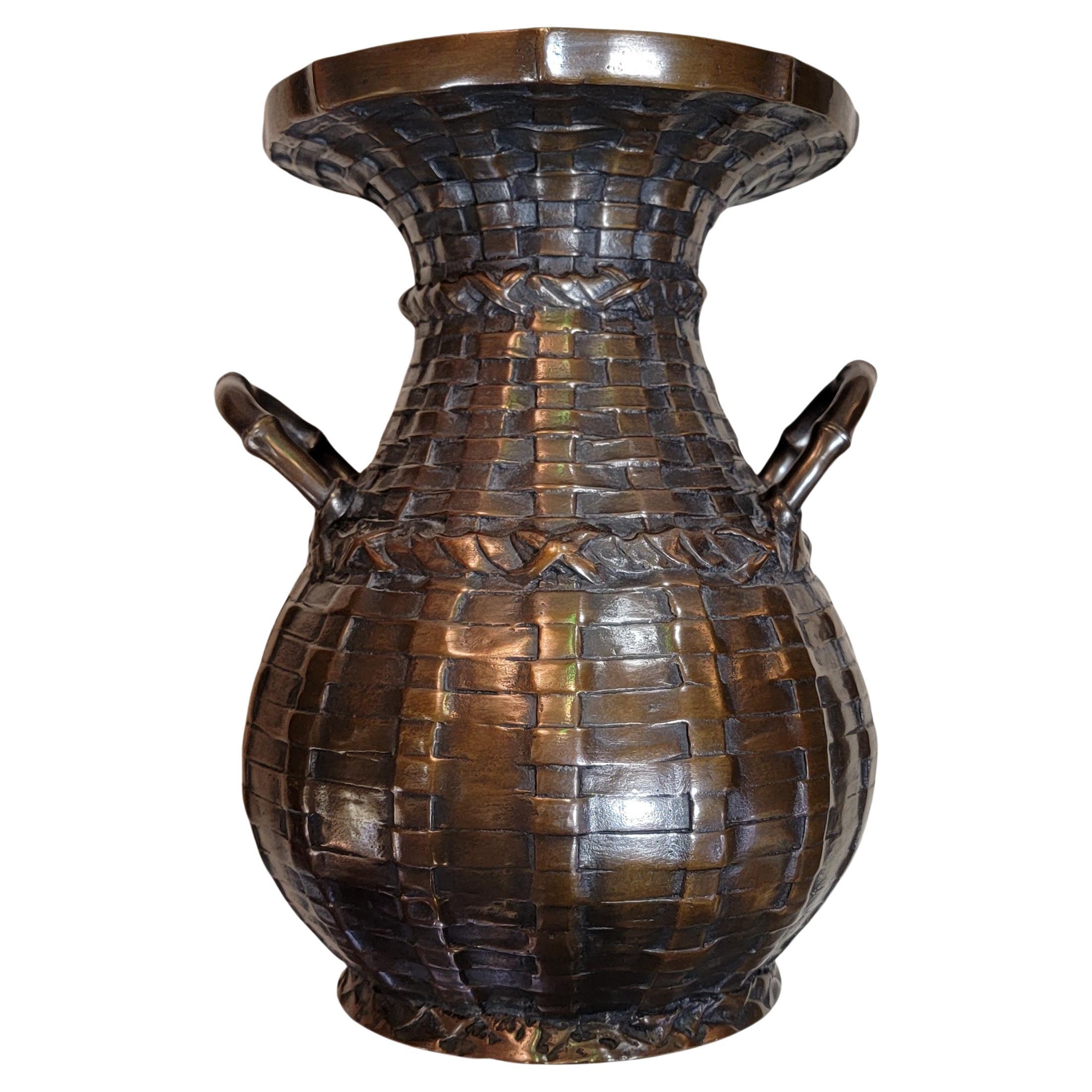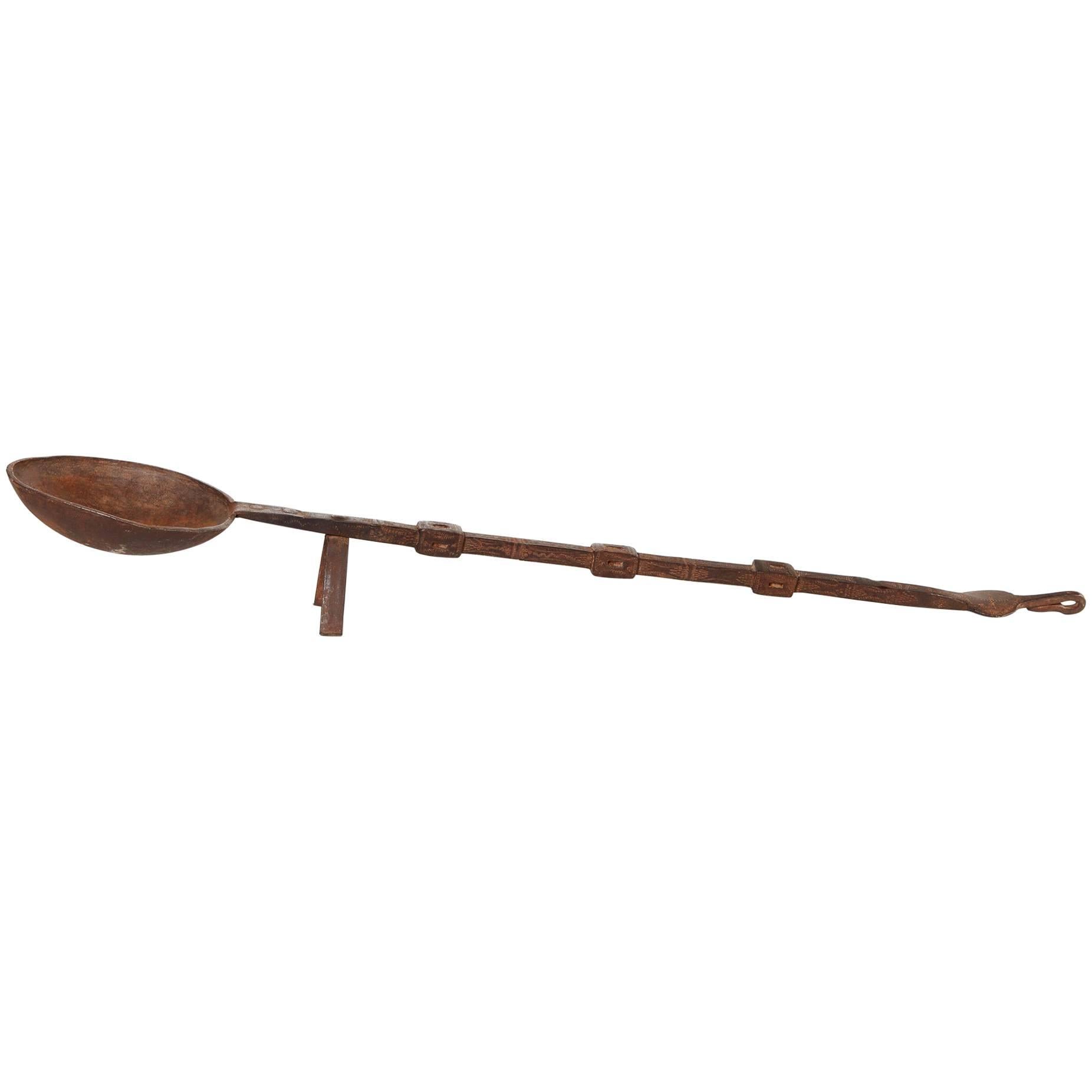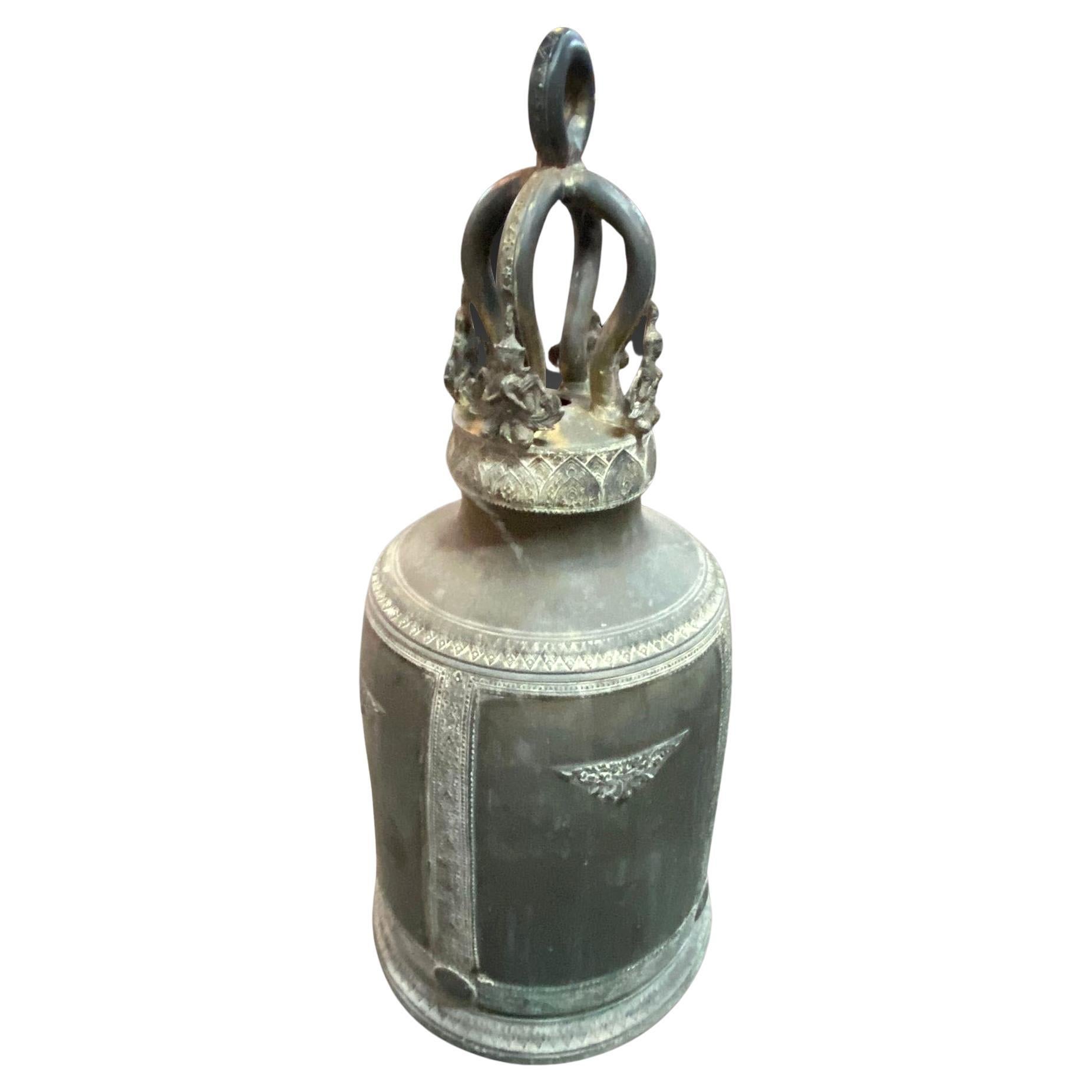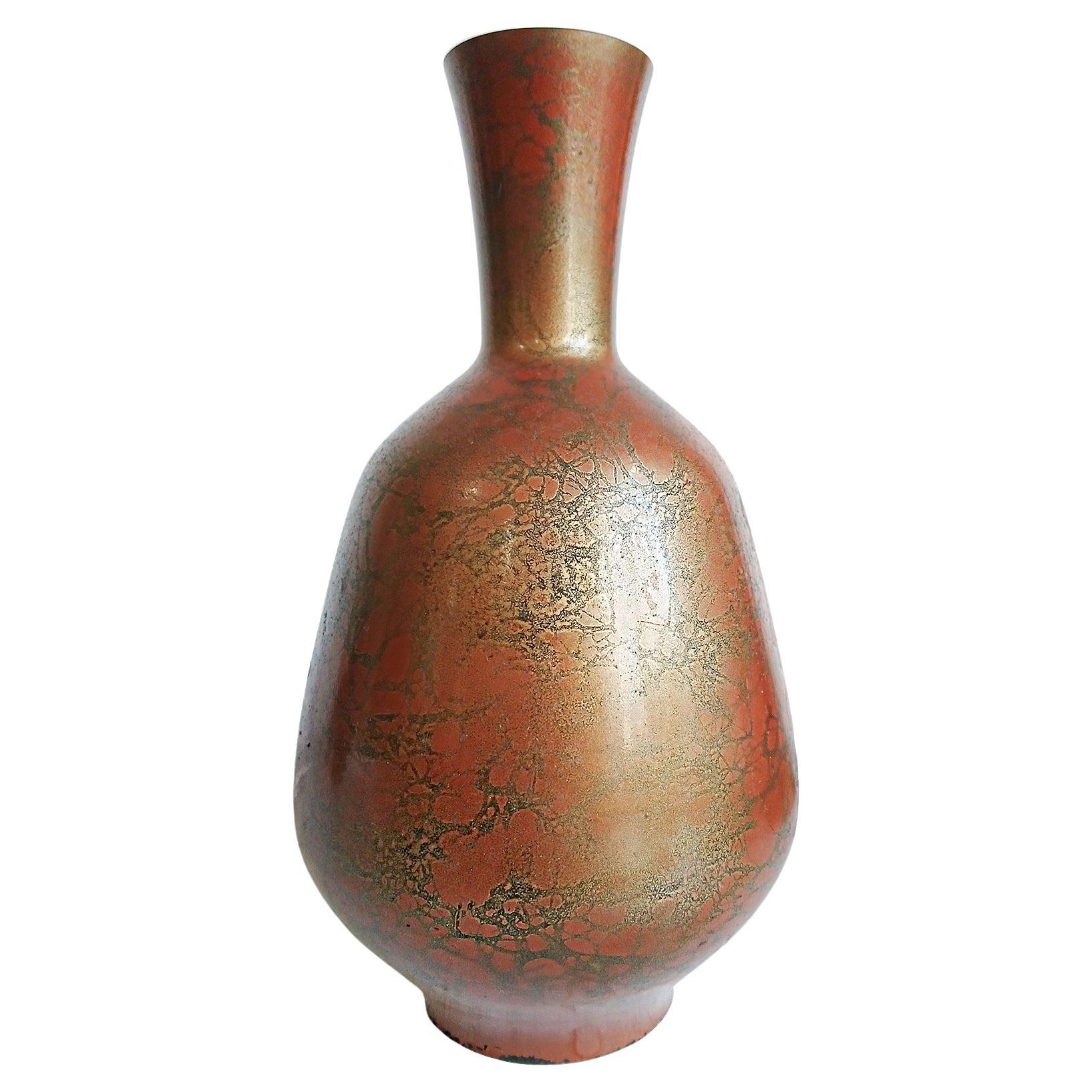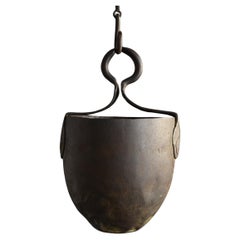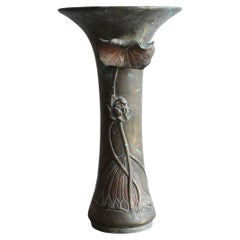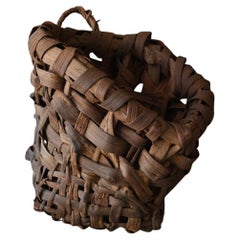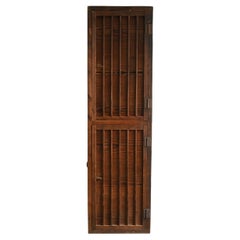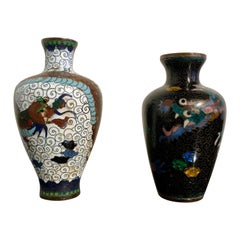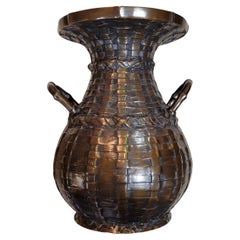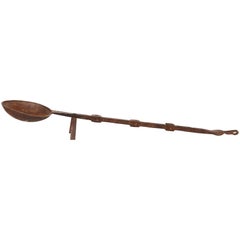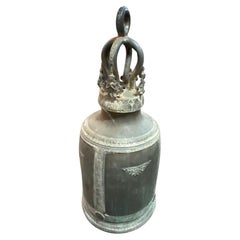Objekte ähnlich wie Antique iron hanging bell from Japan or East Asia/Early 20th century
Möchten Sie mehr Bilder oder Videos?
Zusätzliche Bilder oder Videos von dem*der Anbieter*in anfordern
1 von 21
Antique iron hanging bell from Japan or East Asia/Early 20th century
Angaben zum Objekt
This is an old iron hanging bell believed to have been made over 100 years ago. It is highly likely that it was manufactured in Japan, though the possibility of Korean or Chinese origin cannot be ruled out. It was used for many years in the home of a Japanese collector, where it served as a doorbell to welcome visitors, thus carrying a rich historical background as a charming antique.
Inside the bell is a clapper, called a "zetsu" in Japanese, which is the key part that produces the sound. The included wooden stick was originally tied to this clapper with a string, allowing the bell to be rung by swinging the stick. The stick bears an inscription in ink that reads, "Please ring if you need assistance," serving as a guide for visitors on how to use it.
A distinctive feature of this bell is that, unlike most Japanese temple bells which are commonly made of bronze, this one is made of cast iron. The substantial weight and the weathered patina of rust accumulated over time give it a unique presence. The rustic and robust character of iron adds a deep sense of traditional Japanese aesthetics (wabi-sabi) when incorporated into modern interior designs.
The form of the bell emulates the traditional shape seen in temples, with a basic pyramidal shape that widens towards the bottom in an elegant flared line. Its simplicity is paired with dignity, lending a serene atmosphere to any space. The worn rust and traces of age make it an irresistible piece for antique lovers.
Additionally, an old iron chain, prepared separately, pairs perfectly with this bell. Displaying them together enhances the overall sense of weight and creates a harmonious, unified look in the space. Each link of the chain carries the characteristic texture of aged iron, further accentuating the bell’s appeal. The total weight including the chain is approximately 5 kilograms, giving it a solid and impressive presence beyond what the eye perceives.
Due to its distinctive heaviness and historic charm, this bell fits surprisingly well not only in Japanese-style interiors but also in modern or industrial-themed spaces. For example, hanging it from the ceiling of an entrance or earthen floor area creates a welcoming sign full of depth and character. Its ability to be rung makes it practical as a doorbell, while also adding a nostalgic soundscape to the environment.
It is also recommended as a striking accent piece for the living room. Placing it near a window or alcove allows the rust’s texture to change subtly with light and breeze, making it an ever-changing art piece. Especially when paired with solid wood furniture or lacquerware, it enriches the traditional Japanese aesthetic of wabi-sabi.
Furthermore, hanging it under the eaves of a Japanese garden or veranda to enjoy the gentle ringing in the natural breeze is a lovely idea. If placed outdoors, be mindful of further rusting and deterioration; a somewhat sheltered spot protected from heavy rain and wind is advisable.
Moreover, using it as interior decor in shops or cafes lends an air of history and dignity to the space. Simply placing this bell in a minimalist environment conveys to visitors that the location is special and thoughtfully curated.
【Condition】
There are signs of rust and minor scratches from long-term use, but the structure remains solid. The clapper and wooden stick are included, and the bell can actually be rung. Please retie the string on the wooden stick when using. We ask for your understanding of these features as part of the item’s aged charm.
【Size and Weight】
Bell body: approx. W15.5cm × D15.5cm × H22.9cm (including the semicircular hanging ring)
Height including the S-shaped hook: approx. 30cm
Total length including the chain: approx. 197.5cm
Total weight: approx. 5kg (including chain)
Item number: OB291
[We mainly sell old Japanese items.
We've seen tens of thousands of items so far.
Taking advantage of that experience, we are posting attractive items here.
We are able to do this because we have many years of experience.
There are parts of Japan that are familiar to Japanese people but are still unknown to the rest of the world.
We will continue to offer products that will allow you to fully experience this feeling.]
Anbieterinformationen
5,0
Platin-Anbieter*in
Premium-Anbieter*innen mit einer Bewertung über 4,7 und 24 Stunden Reaktionszeit
Gründungsjahr 2015
1stDibs-Anbieter*in seit 2020
1.562 Verkäufe auf 1stDibs
Typische Antwortzeit: 4 Stunde
- VersandAngebot wird abgerufen …Versand von: senzoku, Japan
- Rückgabebedingungen
Einige Inhalte dieser Seite wurden automatisch übersetzt. Daher kann 1stDibs nicht die Richtigkeit der Übersetzungen garantieren. Englisch ist die Standardsprache dieser Website.
Authentizitätsgarantie
Im unwahrscheinlichen Fall eines Problems mit der Echtheit eines Objekts kontaktieren Sie uns bitte innerhalb von 1 Jahr für eine volle Rückerstattung. DetailsGeld-Zurück-Garantie
Wenn Ihr Objekt nicht der Beschreibung entspricht, beim Transport beschädigt wurde oder nicht ankommt, kontaktieren Sie uns bitte innerhalb von 7 Tagen für eine vollständige Rückerstattung. DetailsStornierung innerhalb von 24 Stunden
Sie können Ihren Kauf jederzeit innerhalb von 24 Stunden stornieren, ohne jegliche Gründe dafür angeben zu müssen.Geprüfte Anbieter*innen
Unsere Anbieter*innen unterliegen strengen Dienstleistungs- und Qualitätsstandards, wodurch wir die Seriosität unserer Angebote gewährleisten können.Preisgarantie
Wenn Sie feststellen, dass ein*e Anbieter*in dasselbe Objekt anderswo zu einem niedrigeren Preis anbietet, werden wir den Preis entsprechend anpassen.Zuverlässige weltweite Lieferung
Unsere erstklassigen Versandunternehmen bieten spezielle Versandoptionen weltweit, einschließlich individueller Lieferung.Mehr von diesem*dieser Anbieter*in
Alle anzeigenAntike asiatische Kupferkübelschale „tsurube“ /20. Jahrhundert/Blumenvase mit hängendem Blumenmotiv
Es handelt sich vermutlich um einen bronzenen "Tsurube" (Wassereimer), der in Japan oder Ostasien hergestellt wurde.
Wahrscheinlich wurde es zur Wasserentnahme aus Brunnen verwendet....
Kategorie
20. Jahrhundert, Ostasiatisch, Sonstiges, Metallarbeit
Materialien
Kupfer
Japanische antike Messingvase/ Lotus-Skulptur/ Lotus-Skulptur aus dem 19. Jahrhundert
Japan Meiji-Ära-Taisho-Ära (etwa 1868-1910)
Aus Messing gefertigt und mit Lotosblumen verziert.
Es ist sehr schön.
Die Form dieser Vase breitet sich ebenfalls wie eine Blume von u...
Kategorie
Antik, Spätes 19. Jahrhundert, Japanisch, Meiji-Periode, Vasen
Materialien
Messing
Antiker japanischer gewebter Wandhängender Korb aus dem 20. Jahrhundert/Wabi-sabi-Vase
Dies ist ein rustikaler geflochtener Korb aus Walnussrinde, der um das 20. Jahrhundert in Japan hergestellt wurde.
In Japan werden Werkzeuge aus natürlichen MATERIALEN seit der Antik...
Kategorie
20. Jahrhundert, Japanisch, Taisho, Dekorative Kunst
Materialien
Holz
Antikes japanisches, antikes Holz-Aufbewahrungsregal/Schrank aus Holz/ frühes 20. Jahrhundert/Woodenschrank
Dies ist ein vertikaler Holzschrank aus japanischem Zedernholz aus der ersten Hälfte des 20. Obwohl nicht bekannt ist, wo er verwendet wurde, strahlt sein Aussehen eine Schönheit aus...
Kategorie
Frühes 20. Jahrhundert, Japanisch, Taisho, Schränke
Materialien
Zedernholz
Japanischer antiker Holzhocker/ frühes 20. Jahrhundert/ niedriger Holztisch
Dieser Holzmörser erinnert an die gute alte Zeit in Japan und ist von der Ästhetik der Geschichte und des Wabi-Sabi durchdrungen. Sie wurde früher für Feste und besondere Anlässe ver...
Kategorie
Antik, Spätes 19. Jahrhundert, Japanisch, Taisho, Hocker
Materialien
Holz
Chinesische antike chinesische gusseiserne Glocke aus Kupferlegierung / Tempelglocke
Eine antike chinesische Handglocke aus einer Kupferlegierung.
Ich glaube, sie stammt aus der späten Qing-Dynastie bis zum Ende der Qing-Dynastie.
Obwohl es sich um einen Guss hande...
Kategorie
Antik, 19. Jahrhundert, Chinesisch, Qing-Dynastie, Metallarbeit
Materialien
Messing, Bronze
Das könnte Ihnen auch gefallen
Kleine japanische Cloisonné-D Drachenvasen, frühes 20. Jahrhundert, Japan
Zwei charmante, kleine japanische Cloisonné-Drachenvasen, Meiji- bis Taisho-Periode, frühes 20. Jahrhundert, Japan.
Miniaturvasen in Balusterform mit spitz zulaufendem, eiförmige...
Kategorie
Frühes 20. Jahrhundert, Japanisch, Taisho, Metallarbeit
Materialien
Kupfer, Emaille, Folie
Vase aus Bronze mit Korbgeflecht, Japanisch, frühes 20. Jahrhundert
Japanische Vase mit Korbgeflecht aus der Taisho-Ära. Unterschrieben. Sehr schwerer und massiver Bronzeguss. Feine Originalpatina und guter Zustand. Maße: 10,13 Zoll groß.
Kategorie
Frühes 20. Jahrhundert, Chinesisch, Taisho, Vasen
Materialien
Bronze
1.250 $ Angebotspreis
30 % Rabatt
Iron Cooking Utencil aus Indien, frühes 20. Jahrhundert
Eisernes Kochgeschirr aus Indien, Anfang des 20.
Dies ist ein cooles und ungewöhnliches Dekorationsobjekt.
Kategorie
Frühes 20. Jahrhundert, Indisch, Metallarbeit
Materialien
Eisen
Bronzeglocke, Indien, 20. Jahrhundert
Glocke aus Bronze. Indien, 20. Jahrhundert.
Glocke aus Bronze mit hohem Korpus und ovalem, fast rechteckigem Sockel, dessen oberer Teil mit glatten Flächen und Figuren aus demselben...
Kategorie
20. Jahrhundert, Indisch, Sonstiges, Metallarbeit
Materialien
Bronze
Japanische Vase aus Messing, frühes 20. Jahrhundert
Eine elegante Messingvase, handgefertigt in Japan, Showa-Periode. Das Finish ist Murashido, eine jahrhundertealte Technik, bei der das gegossene Messing in heißem Öl abgeschreckt und...
Kategorie
Vintage, 1920er, Japanisch, Showa, Vasen
Materialien
Messing
Japanische Showa-Bronzevase aus dem frühen 20. Jahrhundert
Japanische Bronzevase mit schöner Form A, die in der traditionellen japanischen Teezeremonie zur Dekoration einzelner Blumenarrangements verwendet wird.
Alter: Japan, Showa-Periode,...
Kategorie
Frühes 20. Jahrhundert, Japanisch, Antiquitäten
Materialien
Bronze
720 $ Angebotspreis
20 % Rabatt
